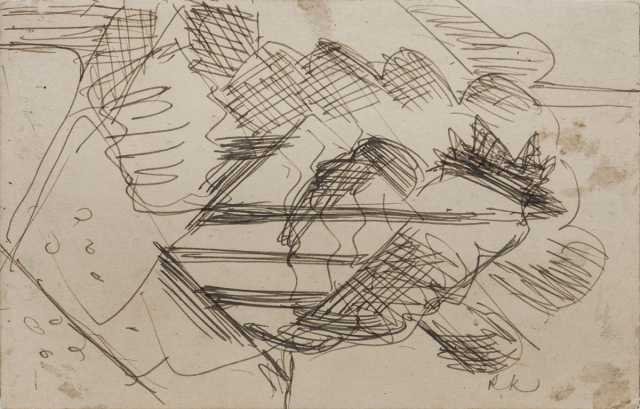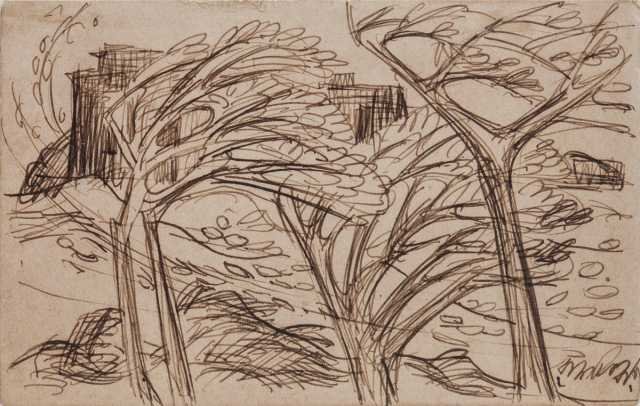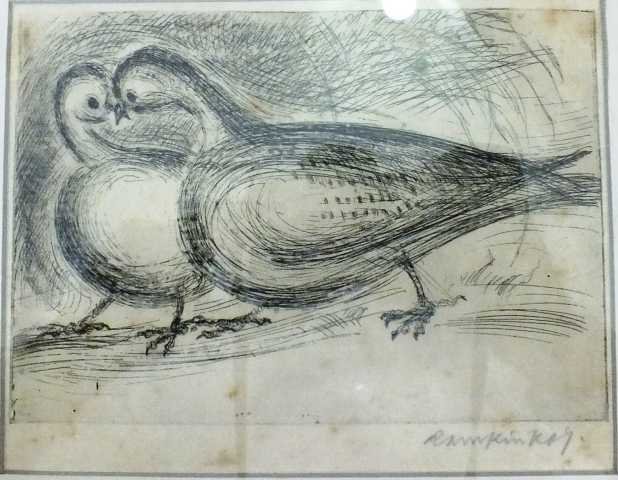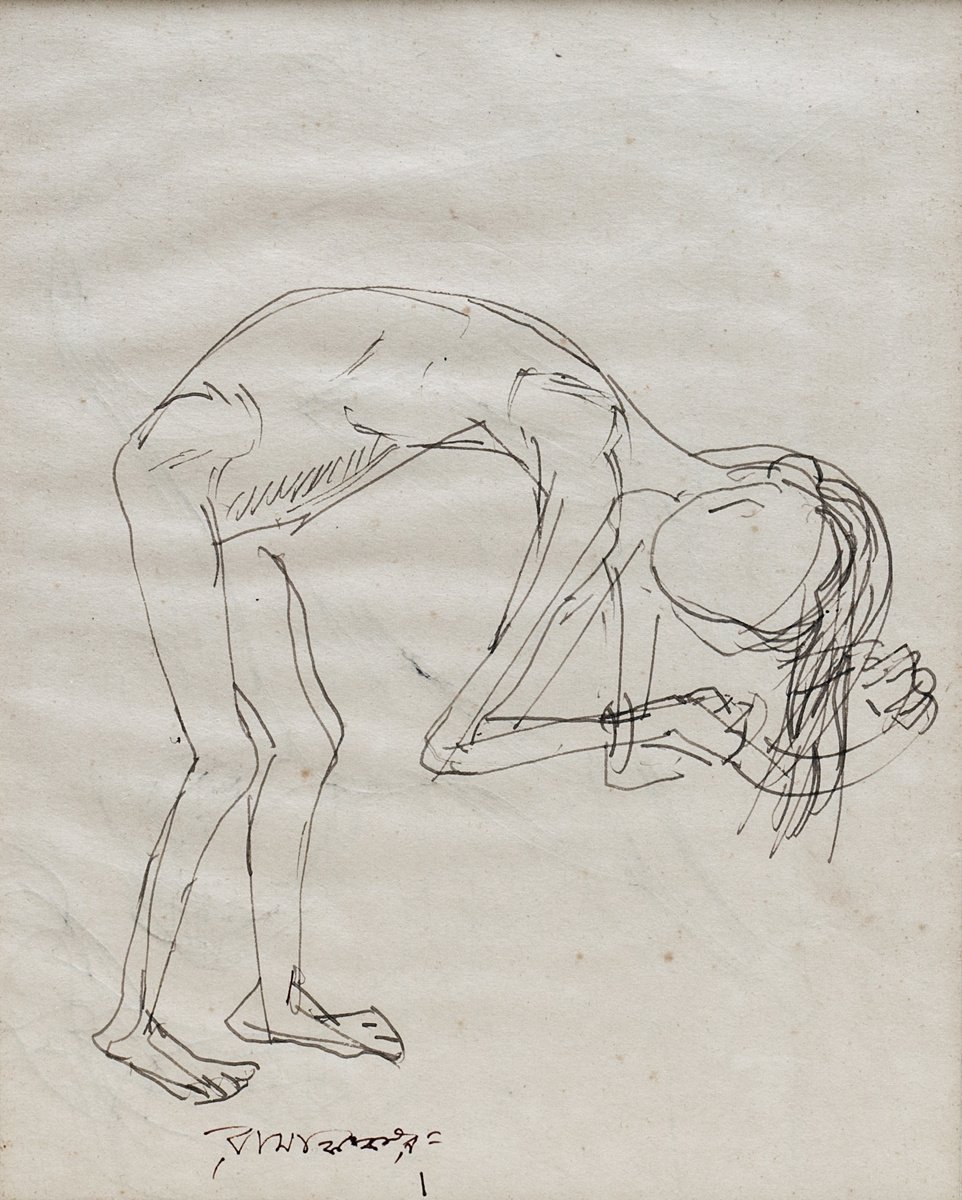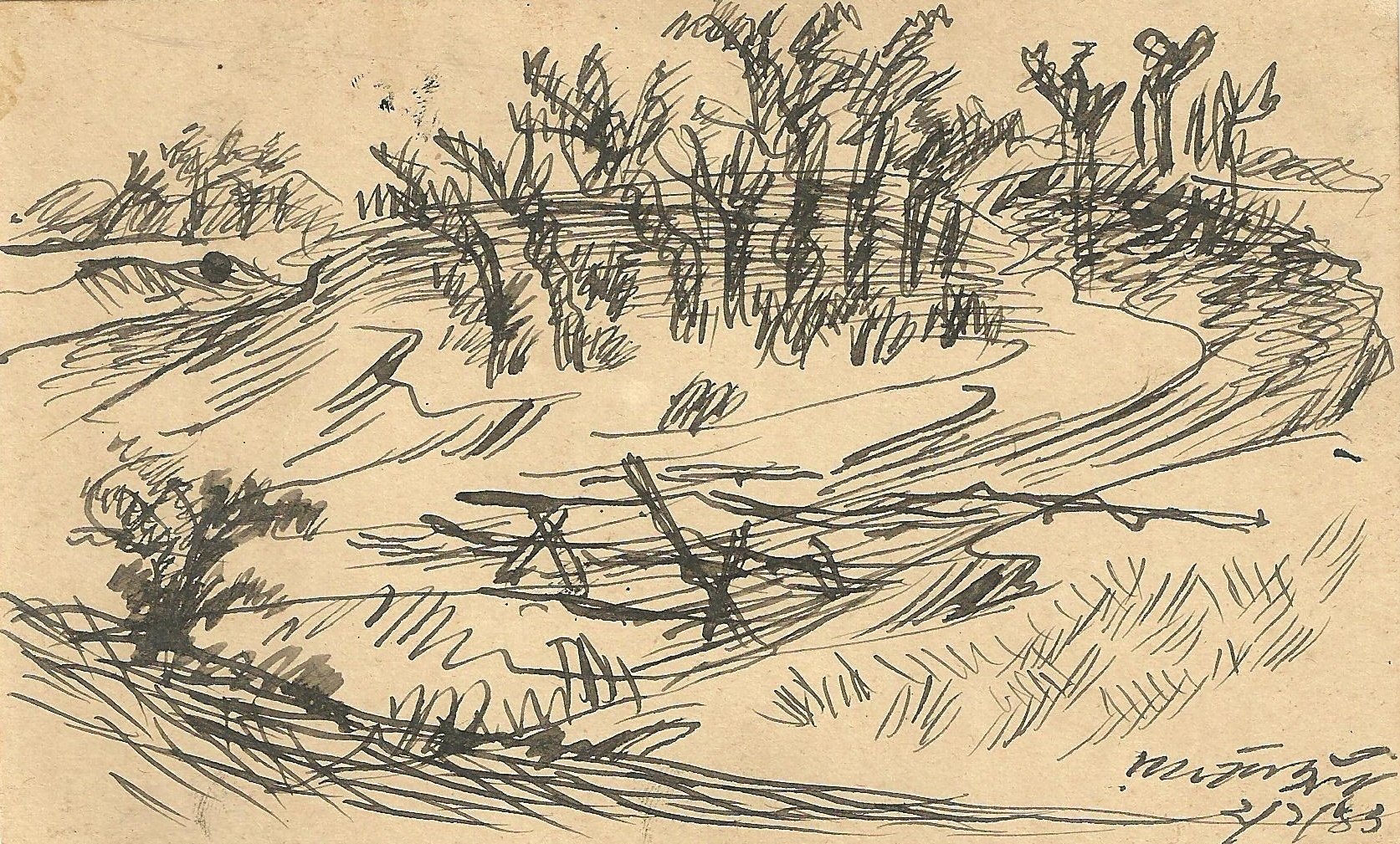
Works by Ramkinkar Baij
September 14 - November 2, 2013 at Akar Prakar, Kolkata
Akar Prakar presents the third in its series of the Great Master’s art exhibitions, showcasing Ramkinkar Baij, a legendary figure in Indian art.
The previous two exhibitions highlighted works of Nandalal Bose and of Benodebehari Mukherjee. Through these exhibitions many aspects and stages of their lives, so far little known, could be brought to light. A similar attempt is being made to present the art- loving people with Ramkinkar Baij. Kolkata missed out on the major NGMA retrospective on him, and this is our humble effort to compensate for that loss.
The principal aim of the present exhibition is to show Ramkinkar’s paintings, sculptures, card sketches, notebooks, book covers, random notes by him on art on pieces of paper etc. In all those, clear marks of his talent as an artiste can be traced at ease. Ours is an endeavour to find out his sources of inspiration (day to day life) at an intimate level. Simultaneously we may try also to find out the definite characteristic features of his art and the aesthetic value. From landscape to figurative art -his range of artistic work (where we see the journey of his experiments from realistic to abstraction) is really amazing.
Ramkinkar is a rare talent that refused to follow blindly the Romantic tradition of Bengal school as well as the artistes influenced by the western academic style. We can also note that Ramkinkar drew his inspiration from his day to day experiences in life. His images are based on hard facts of life. His thoughts and ideas are epoch- making in the History of Indian modern art.
This exhibition also includes some of his experiments in the domain of art and painting. We are confident enough that the same will capture immediate attention of his admirers. Some of this art works have been cordially received from his kith and kin and his dear pupils. We would certainly express our deep sense of gratitude to all of them. This series of shows would not have been possible without their trust. We are also indebted to Debdutta Gupta, the curator for all the three shows, who has been meticulous in putting them together.
Debdutt Gupta
Ramkinkar Baij | Untitled | Pen & ink on Paper | 5.25 x 3.5 in
Ramkinkar Baij | Untitled | Pen & ink on Paper | 5.5 x 3.5 in
Ramkinkar Baij | Untitled | Pen & ink on Paper | 5.5 x 3.5 in
Ramkinkar Baij | Untitled | Pen & ink on Paper | 5.5 x 3.25 in
Ramkinkar Baij | Untitled | Pen & ink on Paper | 3.5 x 5.5 in
Ramkinkar Baij | Untitled | Pen & ink on Paper | 5.5 x 3.5 in
Ramkinkar Baij | Untitled | Pen & ink on Paper | 3.5 x 5.5 in
Ramkinkar Baij | Untitled | Pen & ink on Paper | 3.5 x 5.5 in
Ramkinkar Baij | Untitled | Etching | 4.25 x 6 in
Ramkinkar Baij | Untitled | Mixed media on Paper | 3.25 x 5.25 in
Ramkinkar Baij | Untitled | Etching engraving | 5.75 x 7.75 in
Ramkinkar Baij | Untitled | Etching | 7.25 x 5.25 in
Ramkinkar Baij | Untitled | Pen & ink on paper on Paper | 4 x 9.25 in
Ramkinkar Baij | Untitled | Pen & ink on Paper | 6 x 7.25 in
Ramkinkar Baij | Untitled | Pen & ink on Paper | 6 x 7.5 in
Ramkinkar Baij | Radharani | Pen & ink on Paper | 13.58 x 9.44 in | 1950
Ramkinkar Baij | Untitled | Pen & ink on Paper | 5.75 x 7.25 in
Ramkinkar Baij | Untitled | Pen & ink on Paper | 4 x 6.25 in
Ramkinkar Baij | Untitled | Pen & ink on Paper | 3.5 x 5.75 in | 1943
Ramkinkar Baij | Untitled | Pen & ink on Paper | 10 x 6.75 in
Ramkinkar Baij | Untitled | Watercolor on Paper | 13.75 x 10 in
Ramkinkar Baij | Untitled | Watercolor on Paper | 8.75 x 12.75 in
Ramkinkar Baij | Untitled | Watercolor on Paper | 9 x 6.75 in
Ramkinkar Baij | Untitled | Watercolor on Paper | 7 x 10.25 in
Ramkinkar Baij | Untitled | Oil on Canvas | 29.5 x 34.75 in
Ramkinkar Baij | Untitled | Watercolor on Paper | 9.25 x 13.5 in
Ramkinkar Baij | Untitled | Watercolor on Paper | 6.75 x 9.75 in
Ramkinkar Baij | Mother & child | Plaster of paris | 6.5 x 2.5 x 2 in
Ramkinkar Baij | Untitled | Plaster of Paris | 6.75 x 4.7 x 4 in
Ramkinkar Baij | Cat & Fish | Terracotta | 20 x 4.5 x 3.5 in
Ramkinkar Baij (1906 - 1980)
Ramkinkar Baij was the earliest Indian artist to experiment with abstract sculptural forms. His oil on canvas paintings have a singular experimenting quality going beyond their time, unregimented by dogmas and with only one commitment - to be unstintingly creative.
Born in Bankura in West Bengal in 1906, Ramkinkar Baij studied at the Kala Bhavan, Vishwa Bharati University, Santiniketan in 1925. Trained by two European sculptors, one of whom was a disciple of Bourdelle, who was on a visit to Santiniketan on an invitation by Tagore, his style was still uniquely his own. Groomed by his mentors, Nandalal Bose and Tagore, the clay modeller turned artist. Working at a time when traditional art was transitioning to modern art, Baij's work proved to be crucial to Indian art history. Nature and Baij's own folk background turned out to be the crucial influences in the formation of his own style. Later, he headed the Department of Sculpture at the Kala Bhavan.
He integrated elements of Santhal tribal art and life into his own work and enhanced them with an understanding of Western expressionism that was gleaned from books at the library of the Kala Bhavan.
A retrospective of his works was held at the National Gallery of Art, New Delhi in 2012. His works are in the permanent collection of the National Gallery of Modern Art, New Delhi and in several private and public collections.
Baij died on August 2, 1980, in Kolkata.

